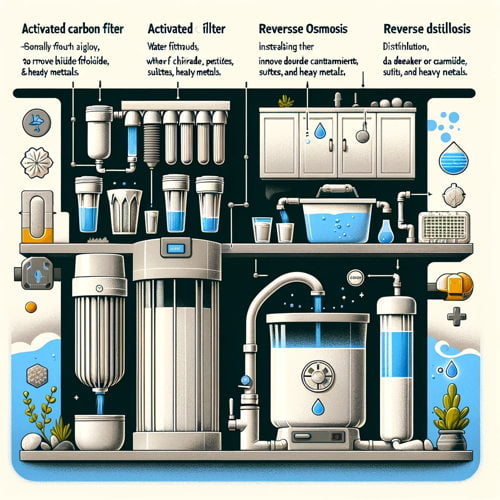Choosing the best way to filter tap water depends on several key factors, including the specific contaminants present in your water, your household water usage, your budget, and your personal preferences. Here’s a detailed exploration of the various methods available for filtering tap water, along with their advantages and considerations.
Understanding Your Water Quality
Before selecting a filtration method, it’s essential to understand what contaminants are in your tap water. This can be determined through a water quality report from your local water supplier or by using a home water testing kit. Common contaminants include chlorine, lead, bacteria, pesticides, and heavy metals.
Popular Water Filtration Methods
Pitcher Filters
- How They Work: These are simple, portable filters that use activated carbon to reduce contaminants like chlorine and, in some cases, heavy metals like lead.
- Pros: affordable, easy to use, no installation required.
- Cons: slow filtering process, frequent filter changes, limited range of contaminants they can remove.

Faucet-Mounted Filters
- How They Work: They attach directly to your faucet, offering a convenient way to filter tap water using activated carbon or other filtration media.
- Pros: Easy to install; allows switching between filtered and unfiltered water.
- Cons: May not fit all faucet types, can slow down water flow, and require regular filter replacements.
Under-sink filters
- How They Work: Installed under the sink and connected to the water line, these can use various filtration technologies, including reverse osmosis, activated carbon, and others.
- Pros: Filters large amounts of water, hidden from view, broader range of contaminant removal.
- Cons: More expensive, requires installation, and may need professional maintenance.
Countertop Filters
- How They Work: Connect to the faucet via a hose and sit on the countertop, using a range of filtration technologies.
- Pros: Easy to install, more effective than pitchers or faucet-mounted filters.
- Cons: It takes up counter space and can be more expensive.
Reverse Osmosis Systems
- How They Work: They use a semi-permeable membrane to remove a wide range of contaminants, including dissolved solids.
- Pros: Highly effective purification improves taste and odor.
- Cons: Wastes water, requires under-sink space, is more expensive, and removes some beneficial minerals.
Whole House Filters
- How They Work: Treat all the water entering your home, ideal for removing sediment, chlorine, and scale.
- Pros: Filters water at every source in your home; long filter lifespan.
- Cons: Expensive, requires professional installation.

Factors to Consider
- Contaminant Removal: Choose a filtration method that effectively removes the specific contaminants in your water.
- Cost: Consider both initial and ongoing costs, including filter replacements.
- Installation and Maintenance: Evaluate whether you can install and maintain the system yourself or if professional help is needed.
- Water Usage: Larger households or homes with high water usage might benefit more from under-sink or whole-house filters.
- Space and Convenience: Consider the amount of space available and how the filter will fit into your daily routine.
Conclusion
The best way to filter tap water in your home depends on your specific needs and circumstances. For most effective results, consider combining different types of filters (e.g., a whole house filter with an under-sink reverse osmosis system) to address a wide range of contaminants. Remember, the goal is not just to improve the taste of your water but to ensure its safety and quality for all uses in your home.
 https://bistrovivant.com is a participant in the Amazon Services LLC Associates Program, an affiliate advertising program designed to provide a means for website owners to earn advertising fees by advertising and linking to Amazon (.com,.co.uk,.ca, etc.) and any other website that may be affiliated with the Amazon Service LLC Associates Program. As an Amazon Associate, I earn from qualifying purchases.
https://bistrovivant.com is a participant in the Amazon Services LLC Associates Program, an affiliate advertising program designed to provide a means for website owners to earn advertising fees by advertising and linking to Amazon (.com,.co.uk,.ca, etc.) and any other website that may be affiliated with the Amazon Service LLC Associates Program. As an Amazon Associate, I earn from qualifying purchases.

